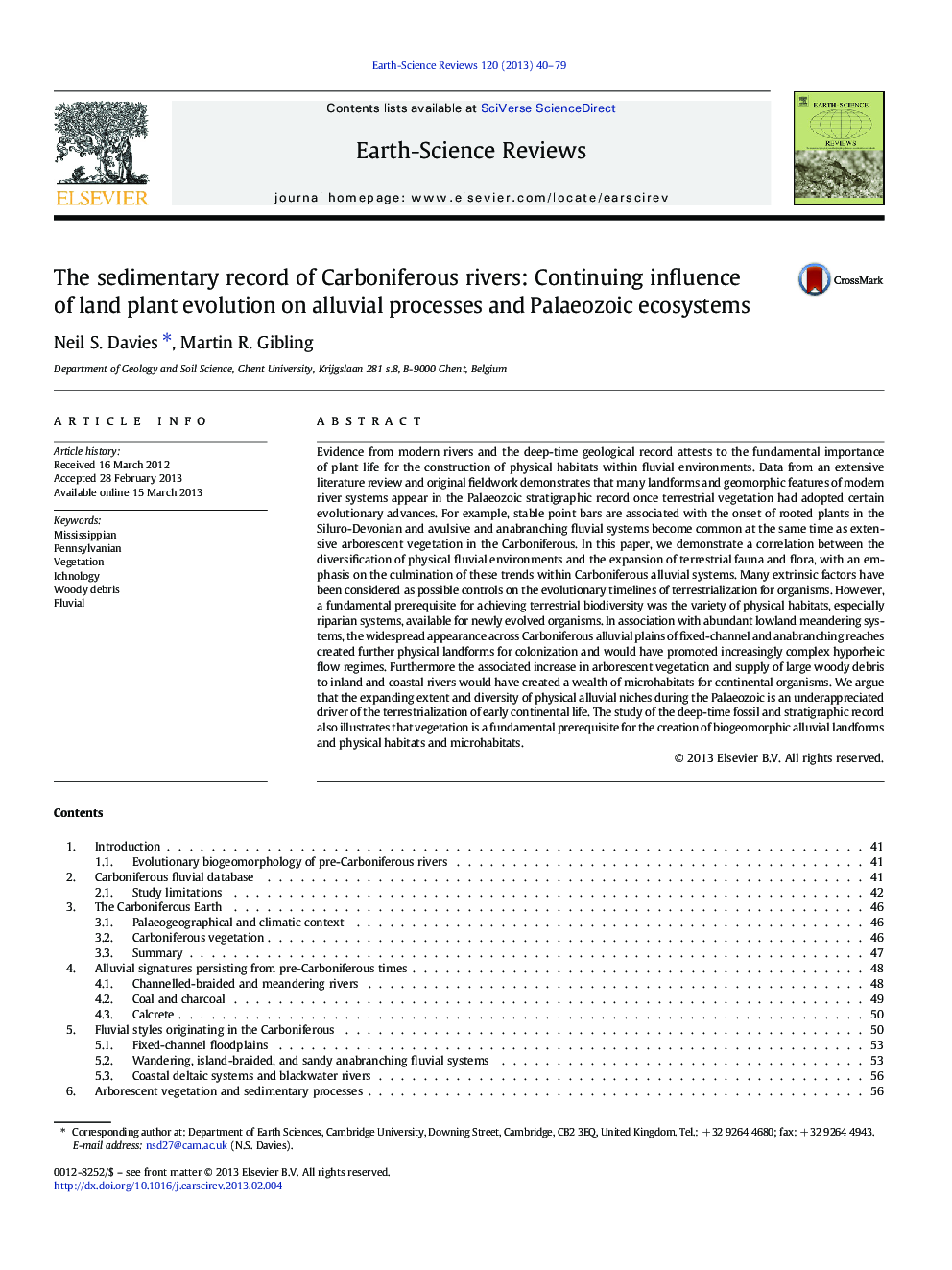| کد مقاله | کد نشریه | سال انتشار | مقاله انگلیسی | نسخه تمام متن |
|---|---|---|---|---|
| 4725836 | 1639982 | 2013 | 40 صفحه PDF | دانلود رایگان |
Evidence from modern rivers and the deep-time geological record attests to the fundamental importance of plant life for the construction of physical habitats within fluvial environments. Data from an extensive literature review and original fieldwork demonstrates that many landforms and geomorphic features of modern river systems appear in the Palaeozoic stratigraphic record once terrestrial vegetation had adopted certain evolutionary advances. For example, stable point bars are associated with the onset of rooted plants in the Siluro-Devonian and avulsive and anabranching fluvial systems become common at the same time as extensive arborescent vegetation in the Carboniferous. In this paper, we demonstrate a correlation between the diversification of physical fluvial environments and the expansion of terrestrial fauna and flora, with an emphasis on the culmination of these trends within Carboniferous alluvial systems. Many extrinsic factors have been considered as possible controls on the evolutionary timelines of terrestrialization for organisms. However, a fundamental prerequisite for achieving terrestrial biodiversity was the variety of physical habitats, especially riparian systems, available for newly evolved organisms. In association with abundant lowland meandering systems, the widespread appearance across Carboniferous alluvial plains of fixed-channel and anabranching reaches created further physical landforms for colonization and would have promoted increasingly complex hyporheic flow regimes. Furthermore the associated increase in arborescent vegetation and supply of large woody debris to inland and coastal rivers would have created a wealth of microhabitats for continental organisms. We argue that the expanding extent and diversity of physical alluvial niches during the Palaeozoic is an underappreciated driver of the terrestrialization of early continental life. The study of the deep-time fossil and stratigraphic record also illustrates that vegetation is a fundamental prerequisite for the creation of biogeomorphic alluvial landforms and physical habitats and microhabitats.
Journal: Earth-Science Reviews - Volume 120, May 2013, Pages 40–79
